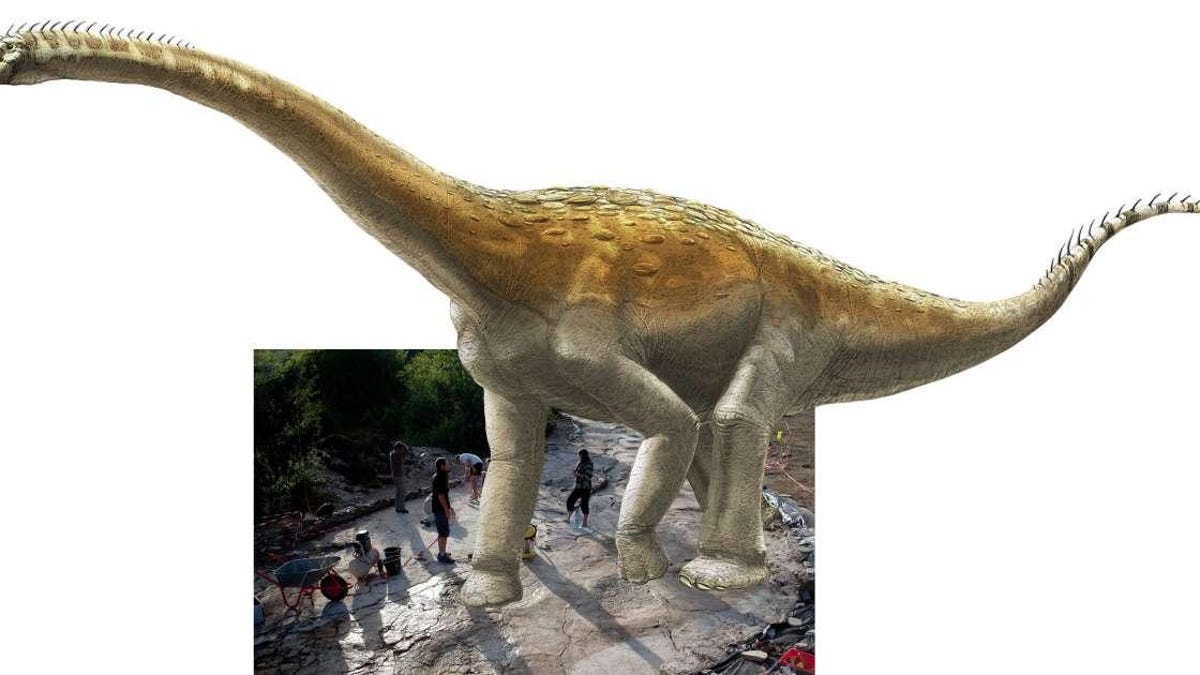See the world's longest track of sauropod dinosaur prints
Talk about bigfoot. The world's longest sauropod trackway follows an epic set of prints left by an absolute beast of a dinosaur.
If you've ever wanted to follow in the footsteps of dinosaurs, then you would need to book a trip to France where researchers have discovered the world's longest sauropod trackway. The epic path covers nearly 500 feet (150 meters) of massive dino foot impressions.
Sauropods were huge herbivore dinosaurs with long necks. Researchers first discovered the sauropod tracks in 2009 in the village of Plagne, which is located in France's Jura Mountains. At the time, they were the largest dinosaur footprints every found, until being eclipsed in 2017 by different sauropod tracks discovered in Australia.
Further excavations over the years revealed the stunning length of the trackway. A photo reveals an impressive stride and huge feet:
This photo shows the well-preserved sauropod trackway.
The sauropod trackway consists of 110 steps left by a dinosaur that lived 150 million years ago during the Jurassic Period.
A research team led by scientists with the Laboratoire de Géologie de Lyon suggests the stomping beast was at least 115 feet (35 meters) long and weighed more than five African elephants put together.
Paleontologists have designated the sauropod as the ichnospecies Brontopodus plagnensis. An ichnospecies is known by its traces, such as footprints, rather than from fossils of bones.
The track site was once covered in a shallow sea. A release this week from the French National Center for Scientific Research says, "The presence of large dinosaurs indicates the region must have been studded with many islands that offered enough vegetation to sustain the animals."
The researchers published their findings in the journal Geobios with the title "The dinosaur tracksite of Plagne (early Tithonian, Late Jurassic; Jura Mountains, France): The longest known sauropod trackway."


